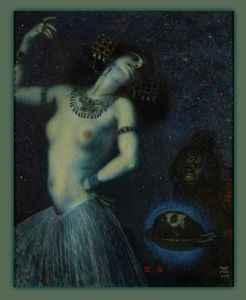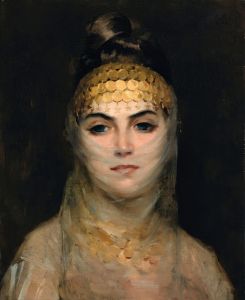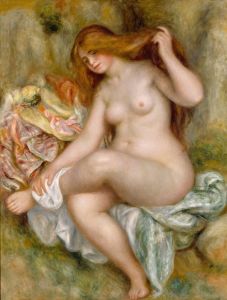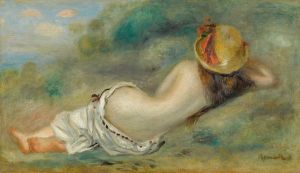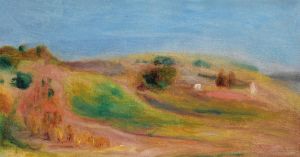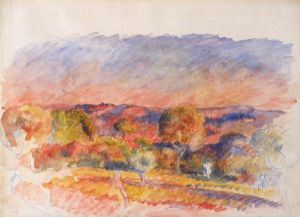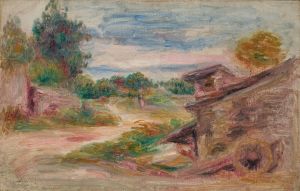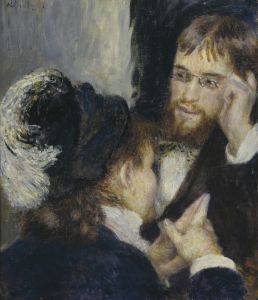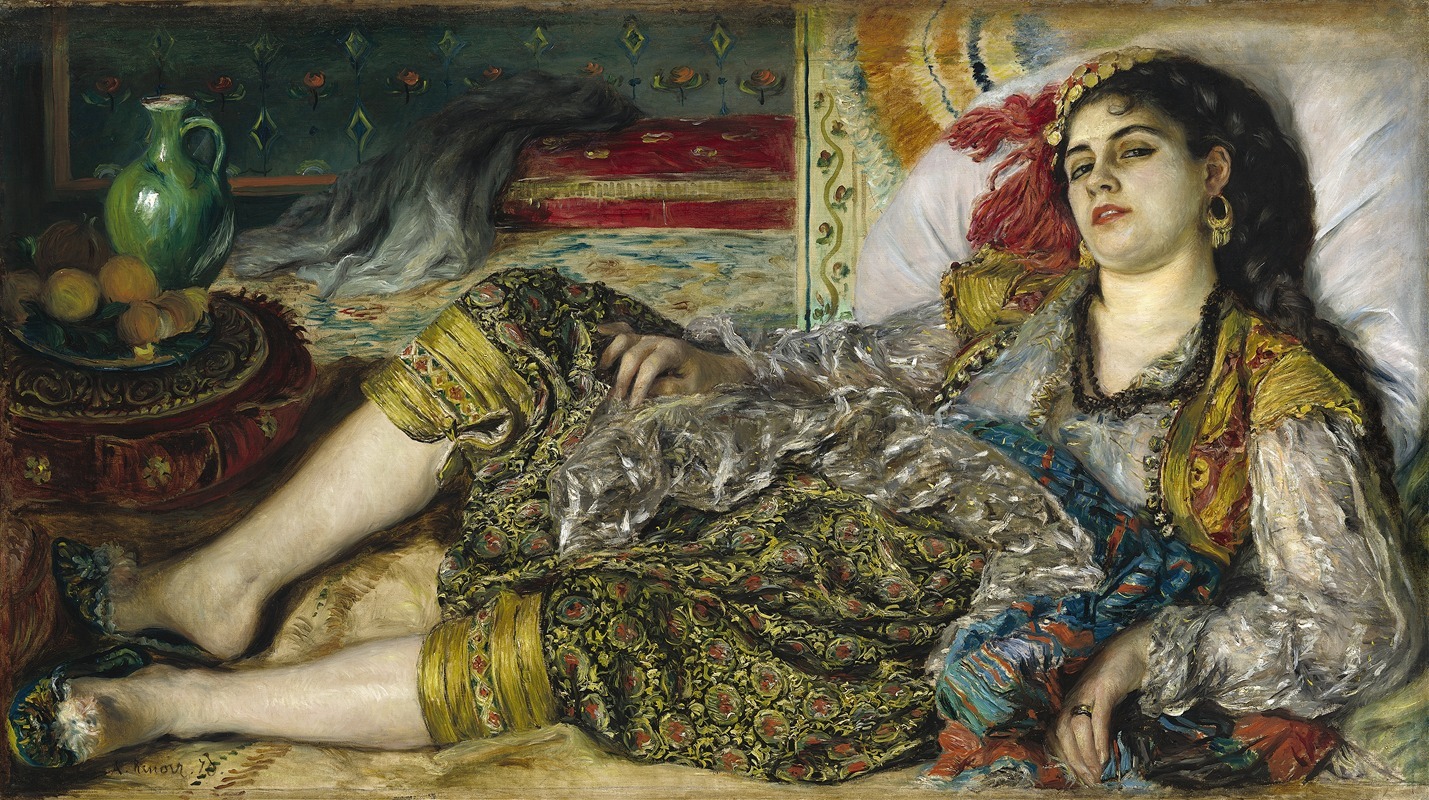
Odalisque
A hand-painted replica of Pierre-Auguste Renoir’s masterpiece Odalisque, meticulously crafted by professional artists to capture the true essence of the original. Each piece is created with museum-quality canvas and rare mineral pigments, carefully painted by experienced artists with delicate brushstrokes and rich, layered colors to perfectly recreate the texture of the original artwork. Unlike machine-printed reproductions, this hand-painted version brings the painting to life, infused with the artist’s emotions and skill in every stroke. Whether for personal collection or home decoration, it instantly elevates the artistic atmosphere of any space.
Pierre-Auguste Renoir, a prominent French artist and a leading figure in the Impressionist movement, painted "Odalisque" in 1870. This artwork is a notable example of Renoir's exploration of the female form and his interest in Orientalist themes, which were popular in European art during the 19th century. The term "odalisque" refers to a female slave or concubine in a harem, a subject that fascinated many Western artists of the time, including Renoir.
Renoir's "Odalisque" reflects his mastery of capturing the sensuality and beauty of the human figure. The painting depicts a reclining nude woman, a common subject in art history, but Renoir's approach is characterized by his use of vibrant colors and soft brushwork. This technique creates a sense of warmth and intimacy, inviting the viewer to appreciate the delicate interplay of light and shadow on the woman's skin.
The composition of "Odalisque" is carefully balanced, with the figure positioned diagonally across the canvas. This arrangement not only draws attention to the curves of the woman's body but also adds a dynamic quality to the painting. Renoir's attention to detail is evident in the rendering of the textiles and background elements, which enhance the exotic and luxurious atmosphere of the scene.
Renoir's interest in Orientalism was influenced by the broader cultural context of 19th-century Europe, where there was a fascination with the East, fueled by colonial expansion and increased travel. This interest is reflected in the choice of subject matter and the incorporation of Eastern motifs in the painting. However, it is important to note that Renoir's interpretation is filtered through a Western lens, and the depiction of the odalisque is more a product of imagination and artistic tradition than an accurate representation of Eastern culture.
"Odalisque" is part of Renoir's early body of work, created during a period when he was developing his distinctive style. This painting, like many of his works from this time, demonstrates his transition from the more formal techniques of academic art to the freer, more expressive style that would define his later career. Renoir's ability to convey emotion and sensuality through color and form is evident in this piece, marking it as a significant step in his artistic evolution.
Today, "Odalisque" is appreciated not only for its aesthetic qualities but also as an example of the cultural exchanges and artistic trends of the 19th century. It offers insight into Renoir's artistic influences and his contribution to the Impressionist movement. The painting is housed in a private collection, making it less accessible to the public, but it continues to be studied and admired by art historians and enthusiasts alike.
In summary, Pierre-Auguste Renoir's "Odalisque" is a testament to his skill in depicting the human form and his engagement with the themes of his time. Through its vibrant colors, delicate brushwork, and evocative composition, the painting captures the viewer's imagination and reflects the enduring allure of the odalisque in Western art.






